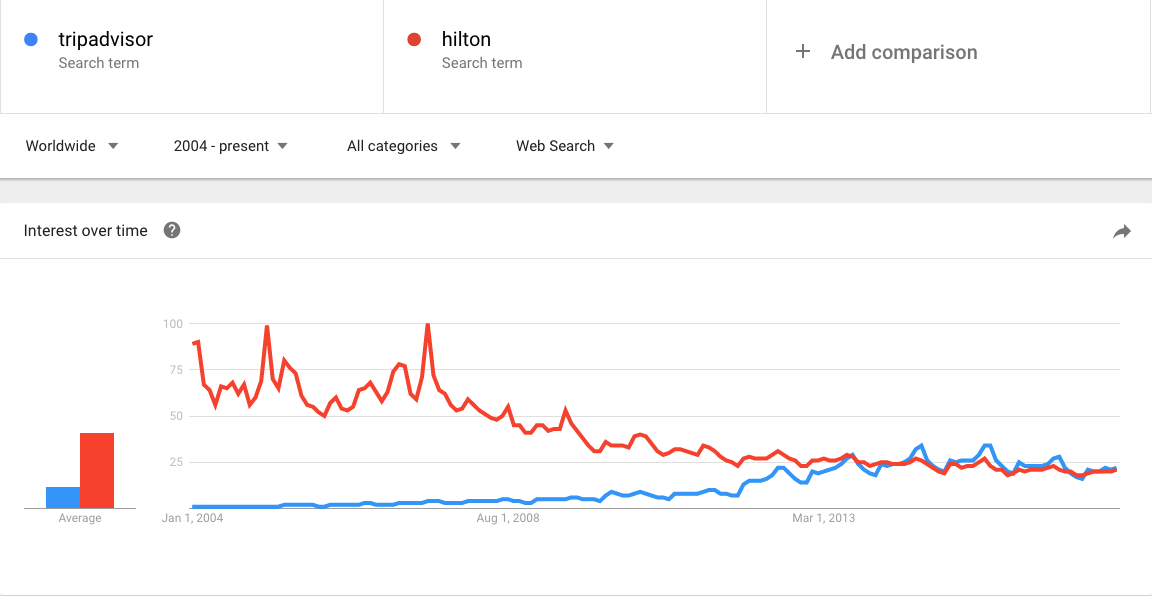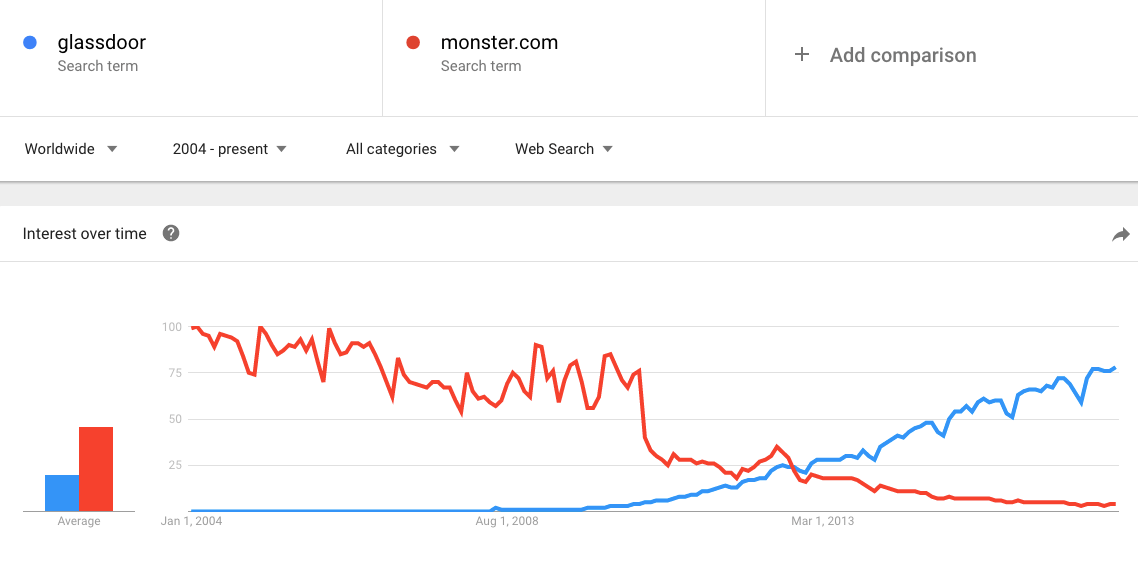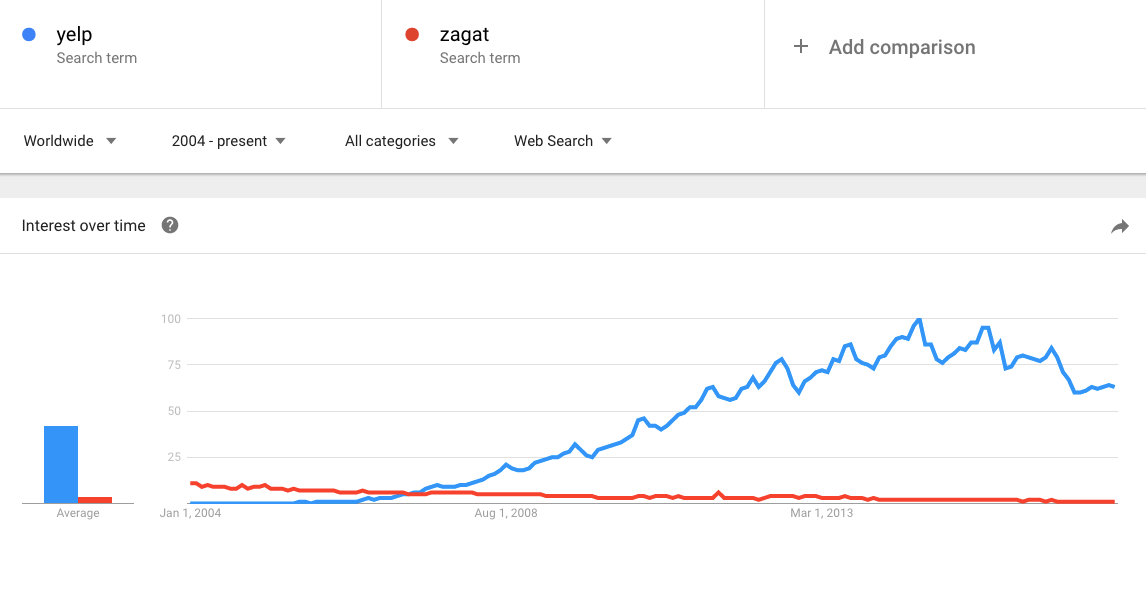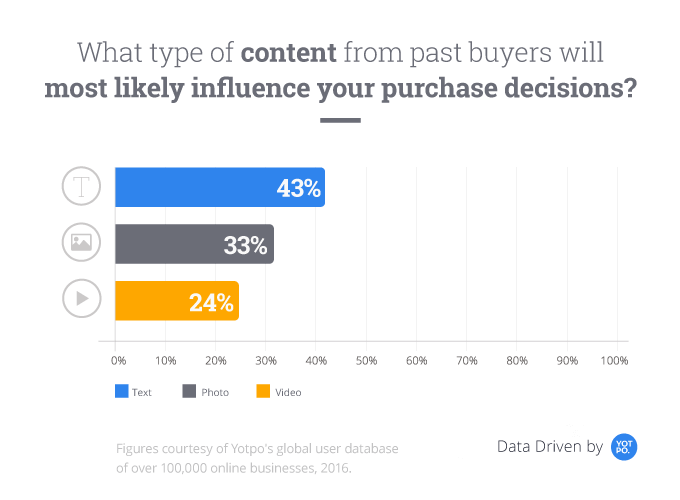The most notable shift in consumer trust over the last decade has been away from marketing messages created by businesses, and towards those created by customers.
Almost every industry has been disrupted by apps or websites that aggregate user-generated content to help consumers make informed decisions.
Consumers responded by making those services their primary destination for pre-purchase research, at the expense of brands that didn’t adapt.
Let’s look at how huge brands have responded to this change in consumer behavior:
First, an example from the hospitality and travel industry:
However, as TripAdvisor accumulated highly trusted user-generated content, users gradually shifted their habit of looking for content directly on the brand site to researching user-generated content first.
This phenomenon has continued with the growth of mobile: As of February 2017, TripAdvisor was the 450th most used app in the world on Android, according to SimilarWeb. Hilton’s app ranked #4,200 in usage.

In some cases, the competition isn’t between a content service and a brand, but rather between two brands, one of which integrates user-generated content in its service.
To find out what inspires brand trust, let’s compare two seemingly similar services that help consumers find jobs: Monster and Glassdoor.
While both brands offer a similar value proposition, Glassdoor lets users take a peek into what each hiring company is actually like, based on trusted reviews from employees.
The results are compelling:

How does UGC stack up against expert content?
Why is user-generated content so trustworthy? Don’t users prefer content created or curated by experts?
Google made this bet when it acquired Zagat for $151m in 2011. As opposed to Yelp, which displays tens of millions of reviews, Zagat combines user-generated content with an editorial team that aims to ensure the quality, credibility, and readability of the content.
Yelp went on to become a $3 billion business, while interest in Zagat declined to almost immaterial levels.

What if a business doesn’t have enough customers to collect UGC?
Airbnb faced this issue in its early days, circa 2009-2010.
They identified a huge trust gap in the market: Most homeowners in the US renting out their apartments used Craigslist for their listings. However, not only did Craigslist have an outdated interface, it was also void of trust-inspiring features.
Airbnb knew that customer reviews could, over time, fill in the trust gap. But, in the early days they simply didn’t have enough customers to create a substantial content base.
Unlike the restaurant market, where a single individual can leave dozens of reviews, short-term rentals is typically an activity that happens with low frequency. Getting reviews was going to take time.
Airbnb made two key decisions that helped fuel their explosive growth:
1. They focused not only on the apartment offered, but also on the person renting it.
By letting homeowners upload a photo of themselves, a short description, and some user-generated content in the form of personal reviews, Airbnb made the transaction personal and the seller behind it more trustworthy.
2. They focused on visual content.
Although photos can be manipulated, the format is perceived to be substantially more trustworthy than text, as “seeing is believing.” Having real photos generated by customers can be a force multiplier.
What makes content trustworthy?
The case studies above illustrate that there are two distinct aspects that determine whether content is deemed trustworthy by consumers. The first aspect is the credibility of the author.
The content that users trust least is that which is created by a business itself.
In addition, there are varying degrees of trust within customer-generated content.
The most trustworthy content is created by friends or respected influencers. But with millions of products and only hundreds of friends, the average person is unlikely to find such content very often.
In the absence of personal recommendations from friends, users are satisfied knowing that user-generated content is real — that the person writing it is an actual buyer or user describing their actual experience, rather than a marketer in disguise.
However, the authenticity of reviews is still a major issue, even for businesses that make substantial efforts to fight fake reviews, like Amazon.
The second aspect is content type. While text still has the most influence on purchase decisions, according to Yotpo research, including customer-generated visual content is highly impactful. Photos and videos provide the most true-to-life, immersive experience, and limit doubt about fake reviews. Some 77% of shoppers prefer customer photos over professional ones.

The importance of both author credibility and visual content speak to the crucial role that authenticity plays in influencing consumer behavior. Leveraging credible, comprehensive user-generated content is the most effective way for a brand to channel that degree of authenticity to potential customers.
Top Takeaways:
- Consumer behavior patterns have shifted to favor user-generated content over brand marketing
- Consumers prefer stand-alone customer content to expert-curated content
- Focusing on the person behind the business inspires trust
- Credible sources and immersive user-generated content have the strongest impact on consumer behavior













